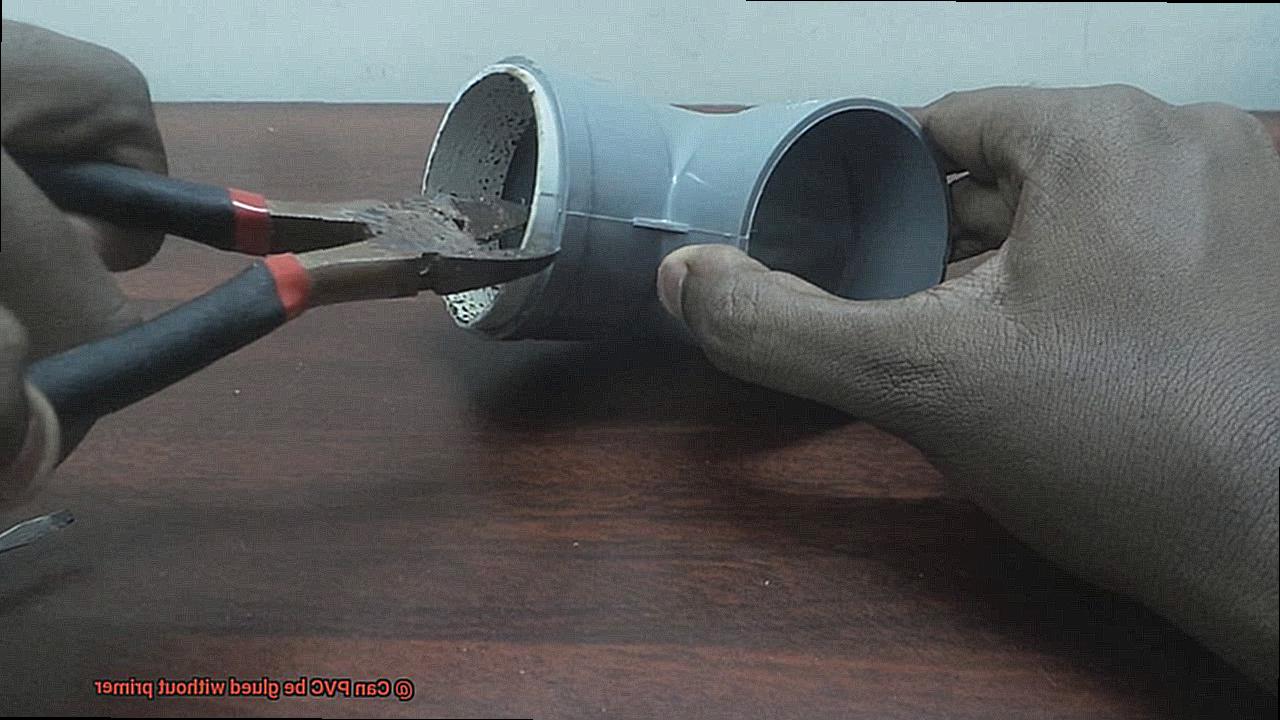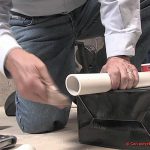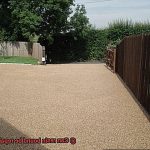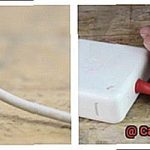Today, we’re diving headfirst into the fascinating world of gluing PVC without primer. Picture this: you’ve got a project on your hands, and you’re wondering if you can skip that extra step of priming.
Will it save you time? Money?
Or is it just a recipe for disaster? Well, fear not, because we’re about to uncover all the juicy details.
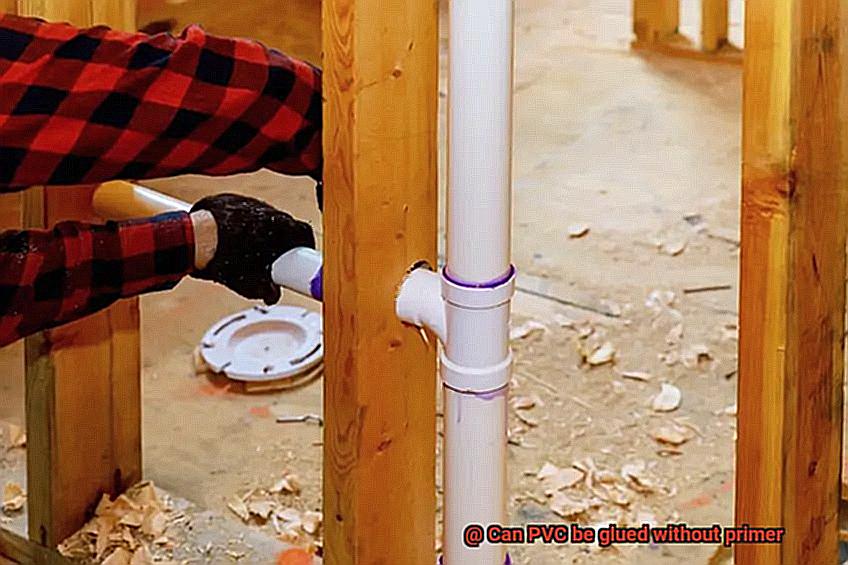
So grab yourself a steaming cup of joe and get ready to unlock the secrets behind gluing PVC pipes without primer.
What is PVC?
Contents
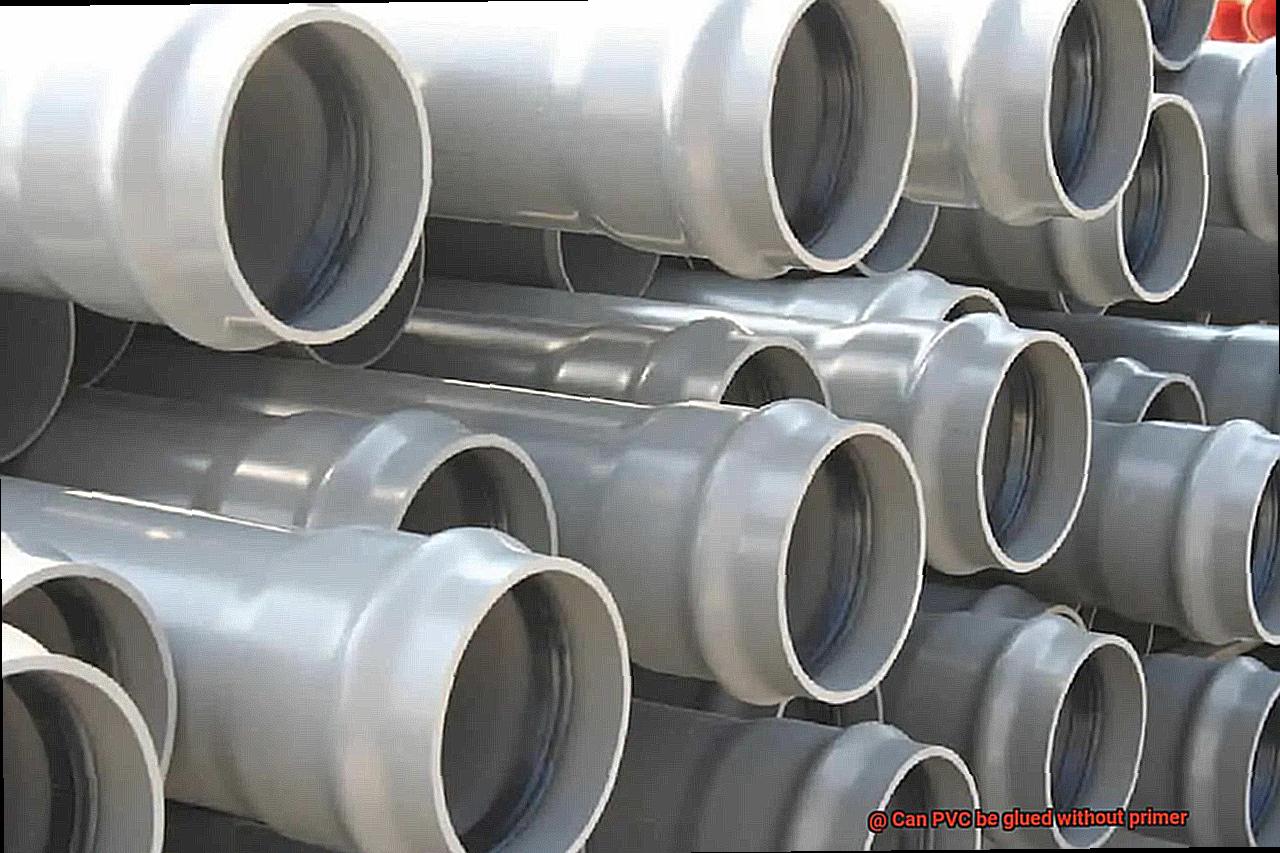
PVC, or polyvinyl chloride, is a synthetic plastic polymer that has skyrocketed in popularity across numerous industries. Its versatility and durability have made it a go-to material for many applications. PVC is created through the process of polymerization, where vinyl chloride monomers are chemically combined to form long chains of PVC molecules.
The uses of PVC are vast and varied. It can be found in pipes, fittings, window frames, flooring, electrical cables, clothing, and even medical devices. Its properties make it suitable for an extensive range of applications. PVC is resistant to moisture, chemicals, and UV radiation, making it an ideal choice for outdoor use. It is commonly used in plumbing and irrigation systems due to its corrosion resistance and long lifespan.
One of the key advantages of PVC is its fire resistance properties. It has a high flame resistance and self-extinguishing capabilities, making it a safe material for construction and electrical applications. Additionally, PVC offers excellent insulation properties, making it suitable for electrical cables and wiring systems.
However, while PVC is highly versatile and durable, it is essential to consider its environmental impact. The manufacturing process of PVC has faced criticism due to the potential release of toxic substances. These concerns have led to advancements in manufacturing practices and recycling initiatives to minimize the negative environmental effects.
What is Primer?
Today, we will uncover the secret behind a crucial ingredient in its magical formula – primer. If you’ve ever wondered why primer is essential when working with PVC materials, you’ve come to the right place.
So, what exactly is primer? In the context of PVC glue, primer is a special adhesive that preps the surface of PVC pipes or fittings before applying glue. Think of it as the superhero sidekick that ensures a super-strong bond between PVC materials.
Primer comes in the form of a clear liquid infused with solvents and chemicals. Its main job is to eliminate any dirt, oil, or debris on the PVC surface. By doing so, it paves the way for the glue to work its magic and create a secure bond. But wait, there’s more. Primer also softens the PVC surface, making it more receptive to the adhesive’s charms.
The benefits of using primer for PVC gluing projects are numerous. It enhances performance and extends the longevity of glued joints, reducing the chances of leaks or failures down the road. However, it’s worth noting that not every PVC gluing application requires primer. Some types of PVC pipes or fittings may not need it. To ensure success, always consult the manufacturer’s instructions or seek professional advice.
To sum it up, primer plays a vital role in ensuring a strong and reliable bond when working with PVC materials. It eliminates impurities, softens the surface, and creates an ideal environment for glue to work its magic. So remember, when it comes to PVC glue, don’t forget your trusty sidekick – primer.
Reasons for Using Primer with PVC Glue
When it comes to joining PVC pipes and fittings, using primer alongside PVC glue is a crucial step in achieving strong and secure connections. Primer acts as a superhero, preparing the PVC surface for bonding with the glue. In this article, we will explore the importance of using primer and how it ensures durable and long-lasting connections.
Cleaning and Preparing the Surface:
Before gluing PVC pipes or fittings, it is essential to have a clean and smooth surface. Imagine trying to stick two pieces of paper together with dirt or oil on them – the bond would be weak, right? Primer acts as a superhero cleaner, removing any dirt, debris, or contaminants from the PVC surface. It creates a chemically compatible surface that allows the glue to work its magic.
Softening the Surface for Better Adhesion:
The smooth surfaces of PVC pipes and fittings can make it challenging for glue to adhere properly. But fear not – primer comes to the rescue. It softens the PVC surface just enough to make it more receptive to the adhesive properties of the glue. This softening effect allows the glue to seep into all the tiny nooks and crannies on the PVC surface, creating a stronger bond.
Enhancing Chemical Interaction:
Primer contains special chemicals that act as matchmakers, bringing the PVC and glue closer together. These chemicals enhance the chemical reaction between the PVC and the glue, increasing their solubility and reactivity. This interaction ensures a durable connection that can withstand pressure and movement.
Speeding up Curing Time:
When you glue PVC pipes or fittings, you want them to stick together quickly and securely, right? Primer acts as a catalyst, speeding up the curing process of the glue. Just like a superhero with super speed, primer ensures that the glue sets fast and strong. This is especially important in situations where you need an immediate and sturdy bond.
Long-Term Durability:
Nobody wants their glued PVC joints to leak or fail over time. That’s why primer is your best friend when it comes to long-term durability. It helps create a uniform surface on the PVC, reducing weak spots or areas where stress could concentrate. With primer, you can have peace of mind knowing that your PVC connections are sealed tight and will stand the test of time.
Reasons for Not Using Primer with PVC Glue
Working with PVC pipes or fittings often involves the use of primer in conjunction with PVC glue. However, there are situations where primer may not be necessary or recommended. In this article, we will explore the reasons for not using primer with PVC glue and when it is appropriate to skip this extra step.
Small-Scale Projects:
For small pipe sizes, such as 1/2 inch or less, the surface area that needs to be bonded is minimal. In these cases, using primer may not provide any significant benefits in terms of bond strength. Whether you’re fixing a tiny leak or connecting a small piece of PVC to an existing system, skipping the primer step can save you time without compromising the strength of the bond.
Dry Environments:
Primer is typically used to remove dirt, grease, or residue from the pipe surface, ensuring a clean and proper bond. However, if you’re repairing or joining PVC pipes in a dry environment where the pipes are already clean and free from contaminants, primer may not be necessary. As long as the surface is dry and free of debris, you can directly apply the PVC glue without using primer.
Specially Formulated PVC Glues:
Some manufacturers offer PVC glues that are specially formulated to work without the need for primer. These glues have unique additives that clean and soften the PVC surface, eliminating the need for a separate primer step. When using these glues, it’s crucial to carefully read and follow the instructions provided by the manufacturer to ensure proper bonding.
Time and Mess Considerations:

Applying primer can be messy and time-consuming. It requires careful application and drying time before applying the glue. In situations where time is limited or when working on a small project, skipping the primer step can save both time and effort. However, it’s important to note that the surface should still be cleaned thoroughly before applying the PVC glue to ensure a strong bond.
Techniques for Gluing PVC without Primer
Technique 1: The Superhero Adhesive – All-Purpose PVC Cement
Technique 2: Cleanliness is Key
Before applying the all-purpose PVC cement, cleanliness reigns supreme. Ensure that the surfaces you’re bonding are squeaky clean, free from any dust, dirt, or grease. Armed with a mild detergent or PVC cleaner, unleash their power to prep your PVC pieces. After cleaning, allow them to bask in the spotlight of dryness before moving forward.
Technique 3: The Art of Application
Now it’s time to showcase your adhesive prowess with the all-purpose PVC cement. Follow the manufacturer’s instructions meticulously for optimal results. Typically, an applicator or brush accompanies the adhesive bottle’s cap. Like an artist wielding a brush, apply a thin and even layer of glue to both surfaces yearning to be united.
Technique 4: Uniting and Holding
Once the adhesive takes center stage, it’s showtime. Swiftly join the PVC pieces together with precision alignment. Assertive pressure for a few seconds guarantees an unyielding bond. For an encore of assurance, hold the pieces in place for no less than 30 seconds to allow the glue to set before daringly moving or disturbing the joint.
While gluing PVC without primer may seem like a time-saving hack, take a moment to consider the specific application and requirements. In critical applications, such as plumbing systems, using primer is generally recommended for a stronger bond.
Additionally, local building codes and regulations might demand the use of primer. Always consult with professionals or check local codes before deciding on gluing PVC without primer.
Different Types of PVC Glue and Their Requirements
To ensure a strong and durable bond, it is crucial to understand the different types of PVC glue and their specific requirements for proper bonding. The right glue selection can make all the difference in creating PVC creations that withstand the test of time.
In this blog post, we will explore the various types of PVC glue and their specific requirements, equipping you with the knowledge needed for successful PVC projects.
Regular PVC Glue – The Classic Choice
Regular PVC glue, the superhero among adhesives for joining PVC pipes, is a clear liquid comprising powerful solvents, resins, and additives that create a robust bond. However, it requires a vital sidekick – a primer. The primer’s role is to prepare the surface of the PVC by removing dirt and contaminants, while also softening the material for optimal adhesion.
Low-VOC PVC Glue – Better for You and the Environment
For those seeking an environmentally friendly option, low-VOC PVC glue is the go-to choice. With reduced levels of harmful chemicals, it is safer to use in confined spaces or areas with poor ventilation. Similar to regular PVC glue, low-VOC glue also necessitates the application of a primer for proper bonding.
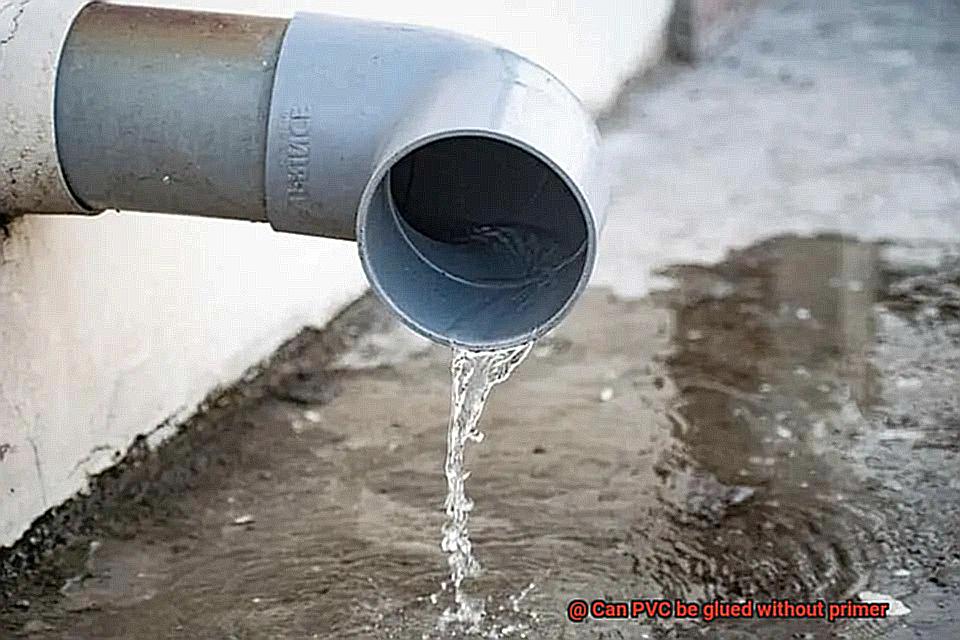
Quick-Drying PVC Glue – Fast and Furious Bonding
In situations where time is of the essence, quick-drying PVC glue comes to the rescue. Designed for swift action, this adhesive sets within minutes, allowing you to proceed with your project without delay. However, even quick-drying glue requires a primer to ensure a solid bond.
High-Pressure PVC Glue – Built to Handle the Pressure
When dealing with pressurized systems or pipes carrying liquids under high pressure, ordinary glue won’t suffice. Enter high-pressure PVC glue, a specialized adhesive engineered to provide a stronger bond and greater resistance to pressure than regular PVC glue. The primer remains crucial for maximum strength and durability.
All-Purpose PVC Glue – Your Versatile Sidekick
For all your PVC needs, all-purpose PVC glue is here to save the day. Whether joining pipes and fittings or repairing small cracks and leaks in PVC materials, this versatile glue guarantees a strong and durable bond. Like other types of PVC glue, it requires a primer for optimal adhesion.
Advantages and Disadvantages of Gluing PVC without Primer
Let’s explore the advantages and disadvantages of gluing PVC without primer, so you can make an informed decision for your next project.
Advantages:
- Time-saving: Gluing PVC without primer saves time during installation, especially for large-scale projects. Eliminating the need for primer allows for a quicker and more efficient job.
- Cost-effective: Skipping primer saves money since primers are an additional product that needs to be purchased. The cost of primers can add up, particularly for large projects. By eliminating the need for primer, you can reduce overall expenses without compromising the strength and durability of the glued joint.
- Convenience: Gluing PVC without primer is more convenient in situations where using primer is not feasible or practical. For instance, working in tight spaces or lacking access to primer at the time of installation makes skipping this step a viable option.
Disadvantages:
- Weaker bond: Gluing PVC without primer can result in a weaker bond between pipes or fittings. Primer cleans and prepares the surface, ensuring better adhesion between the material and the glue. Without primer, there is a higher risk of joint failure or leaks over time.
- Reduced longevity: The absence of primer can affect the longevity of the glued joint. Primer removes dirt, grease, or contaminants from the PVC surface, allowing better penetration and adhesion of the glue. Without proper surface preparation, the glued joint may deteriorate more quickly, leading to potential issues in the future.
- Limited compatibility: Not all types of PVC adhesive are suitable for gluing without primer. Some adhesives are specifically formulated to be used with primer, and using them without primer may result in poor adhesion or bond failure. Checking manufacturer’s instructions and recommendations is crucial before attempting to glue PVC without primer.
9cKNrB6rUtk” >
Also Read: How To Glue PVC Pipe Without Primer?
Conclusion
In conclusion, the act of gluing PVC without primer is indeed possible in certain situations. However, it’s important to weigh the advantages and disadvantages before proceeding.
Typically, using primer when gluing PVC pipes and fittings is highly recommended. This extra step not only ensures a stronger bond but also increases the longevity of the connection. Primer serves multiple purposes: it cleans the surface, eliminates contaminants, and softens the PVC material, creating an optimal environment for the adhesive to work its magic. The result? Enhanced performance, reduced risk of leaks or failures, and a durable connection capable of withstanding pressure and movement.
Nevertheless, there are exceptions where primer may not be necessary or advised. For instance, in small-scale projects with minimal surface area to bond or in dry environments where the pipes are already clean, skipping the primer step can save valuable time without compromising bond strength. Additionally, some manufacturers offer specially formulated PVC glues that eliminate the need for primer altogether.
However, it’s crucial to consider your specific application and requirements when opting for glueing PVC without primer. Critical applications such as plumbing systems may still necessitate primer for a stronger bond. It’s always wise to consult professionals or check local codes before deciding on gluing PVC without primer.
Ultimately, whether you choose to use primer or not when gluing PVC depends on your unique project needs and circumstances.

